#mountain wood-sorrel
Text
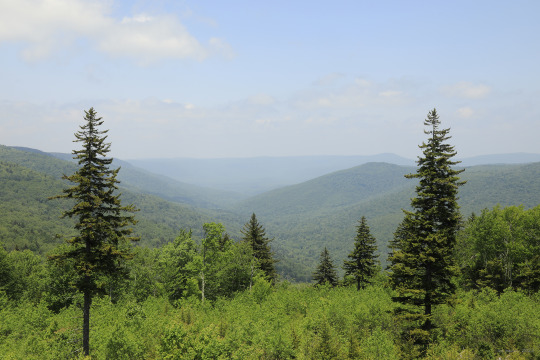



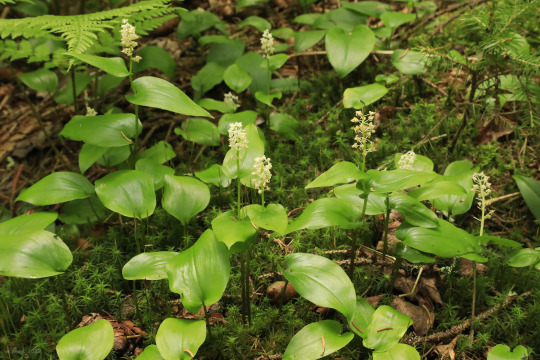

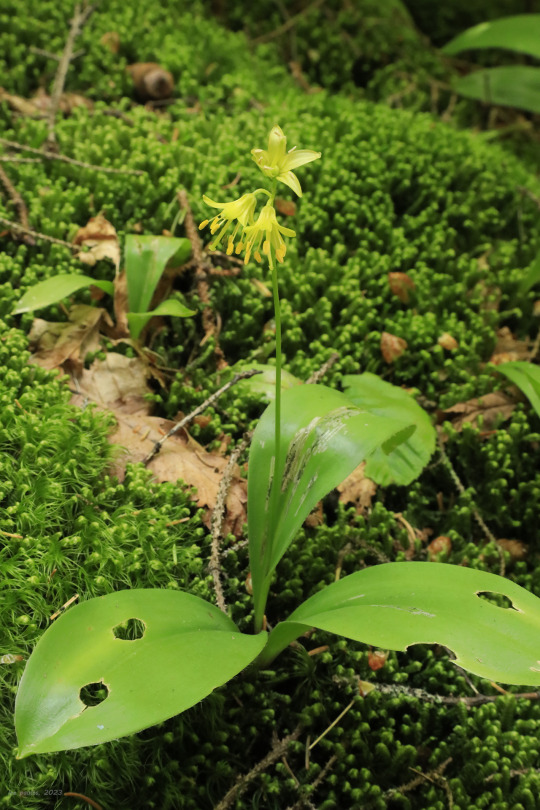
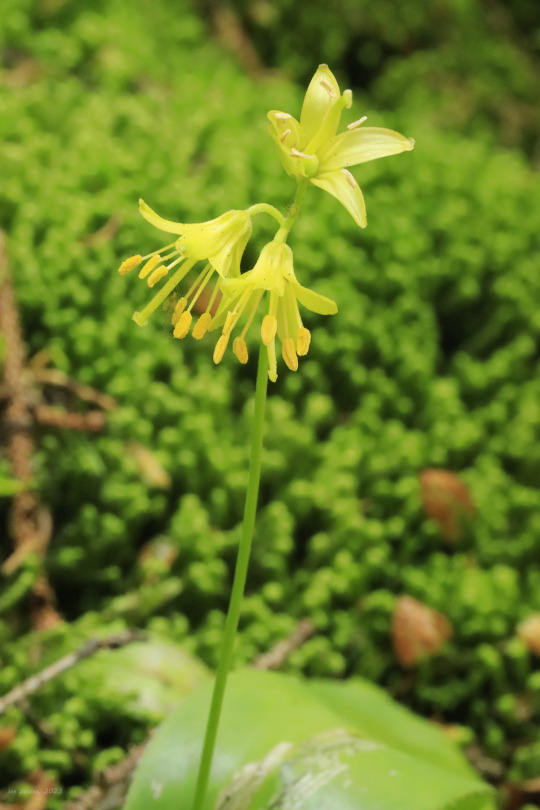





Walk with me: Visit to a high-elevation red spruce forest. The red spruce (Picea rubens) forest on top of Red Spruce Knob, the ninth highest peak in West Virginia, provides a bittersweet glimpse back in time to the primeval beauty and solitude of such places prior to the arrival of the logging companies in the mid-Nineteenth to early Twentieth centuries. The loggers stripped the mountains bare and set in motion the massive wildfires that burned away everything, including the soil itself, down to solid bedrock. Almost a century later, the forest is regenerating and in some places, such as Red Spruce Knob, has regained the richness and vitality of a healthy boreal ecosystem.
From top: a view of Red Spruce Knob, in the far distance, from the Highland Scenic Highway overlook; Canada mayflower (Maianthemum canadense), a ubiquitous understory component of the forest, along with mountain woodsorrel, yellow clintonia (a.k.a. blue-bead lily), hobblebush viburnum, Indian cucumber, green false hellebore, and various mosses and ferns; yellow clintonia (Clintonia borealis) in bloom; pink lady's slipper (Cypripedium acaule); green false hellebore (Veratrum viride) on eastern hay-scented fern (Dennstaedtia punctilobula); and mountain woodsorrel (Oxalis montana).
#appalachia#vandalia#west virginia#wildflowers#spring#flora#allegheny mountains#monongahela national forest#red spruce knob#highland scenic highway#red spruce#canada mayflower#yellow clintonia#blue-bead lily#pink lady's slipper#false green hellebore#eastern hay-scented fern#mountain woodsorrel#mountain wood-sorrel#boreal forest
208 notes
·
View notes
Video
n82_w1150 by Biodiversity Heritage Library
Via Flickr:
Rocky Mountain flowers :. New York :H. W. Wilson,1920, c1914.. biodiversitylibrary.org/page/40859494
#Rocky Mountains#New York Botanical Garden#LuEsther T. Mertz Library#bhl:page=40859494#dc:identifier=https://biodiversitylibrary.org/page/40859494#Mallows#Flax#Oxalis#Spurge#Geranium#1. Linum perenne : Flax#2. Oxalis stricta : Wood Sorrel#3. Sidalcea neo-mexicana#7. Malvastrum coccineum#8. Callirhoe involucrata: Poppy Mallow#4. Euphorbia marginata : Snow-on-the-mountain#5. Erodium cicutarium : Storksbill#Alfilaria#6. Geranium caespitosum : Cranesbill#artist:name=Edith Schwartz Clements#flickr#flower#flowers#plant#plants#wildflower#wild flower#wildflowers#wild flowers#botany
0 notes
Text
Cryptidclaw's WC Prefixes List!
Yall said you were interested in seeing it so here it is!
This is a collection of mostly Flora, Fauna, Rocks, and other such things that can be found in Britain since that’s where the books take place!
I also have other Prefixes that have to do with pelt colors and patterns as well!
Here’s a link to the doc if you dont want to expand a 650 word list on your Tumblr feed lol! the doc is also in my drive linked in my pined post!
below is the actual list! If there are any names you think I should add plz tell me!
EDIT: I will update the doc with new names as I come up with them or have them suggested to me, but I wont update the list on this post! Plz visit my doc for a more updated version!
Animals
Mammal
Badger
Bat
Bear
Beaver
Bison
Boar
Buck
Calf
Cow
Deer
Elk
Fawn
Ferret
Fox
Goat
Hare
Horse
Lamb
Lynx
Marten
Mole
Mouse
Otter
Rabbit
Rat
Seal
Sheep
Shrew
Squirrel
Stoat
Vole
Weasel
Wolf
Wolverine
Amphibians
Frog
Newt
Toad
Reptiles
Scale
Adder
Lizard
Snake
Turtle
Shell
Birds
Bird
Down
Feather
Albatross
Bittern
Buzzard
Chaffinch
Chick
Chicken
Coot
Cormorant
Corvid
Crane
Crow
Curlew
Dove
Duck
Dunlin
Eagle
Egret
Falcon
Finch
Gannet
Goose
Grouse
Gull
Hawk
Hen
Heron
Ibis
Jackdaw
Jay
Kestrel
Kite
Lark
Magpie
Mallard
Merlin
Mockingbird
Murrelet
Nightingale
Osprey
Owl
Partridge
Pelican
Peregrine
Petrel
Pheasant
Pigeon
Plover
Puffin
Quail
Raven
Robin
Rook
Rooster
Ruff
Shrike
Snipe
Sparrow
Starling
Stork
Swallow
Swan
Swift
Tern
Thrasher
Thrush
Vulture
Warbler
Whimbrel
Wren
Freshwater Fish
Fish
Bass
Bream
Carp
Dace
Eel
Lamprey
Loach
Minnow
Perch
Pike
Rudd
Salmon
Sterlet
Tench
Trout
Roach
Saltwater fish and other Sea creatures (would cats be able to find some of these? Probably not, I don't care tho)
Alge
Barnacle
Bass (Saltwater version)
Bream (Saltwater version)
Brill
Clam
Cod
Crab
Dolphin
Eel (Saltwater version)
Flounder
Garfish
Halibut
Kelp
Lobster
Mackerel
Mollusk
Orca
Prawn
Ray
Seal
Shark
Shrimp
Starfish
Sting
Urchin
Whale
Insects and Arachnids
Honey
Insect
Web
Ant
Bee
Beetle
Bug
Butterfly
Caterpillar
Cricket
Damselfly
Dragonfly
Fly
Grasshopper
Grub
Hornet
Maggot
Moth
Spider
Wasp
Worm
Trees
Acorn
Bark
Branch
Forest
Hollow
Log
Root
Stump
Timber
Tree
Twig
Wood
Alder
Apple
Ash
Aspen
Beech
Birch
Cedar
Cherry
Chestnut
Cypress
Elm
Fir
Hawthorn
Hazel
Hemlock
Linden
Maple
Oak
Pear
Poplar
Rowan
Redwood
Spruce
Willow
Yew
Flowers, Shrubs and Other plants
Berry
Blossom
Briar
Field
Flower
Leaf
Meadow
Needle
Petal
Shrub
Stem
Thicket
Thorn
Vine
Anemone
Apricot
Barley
Bellflower
Bluebell
Borage
Bracken
Bramble
Briar
Burnet
Buttercup
Campion
Chamomile
Chanterelle
Chicory
Clover
Cornflower
Daffodil
Daisy
Dandelion
Dogwood
Fallow
Fennel
Fern
Flax
Foxglove
Furze
Garlic
Ginger
Gorse
Grass
Hay
Heather
Holly
Honeysuckle
Hop
Hyacinth
Iris
Ivy
Juniper
Lavender
Lichen
Lilac
Lilly
Mallow
Marigold
Mint
Mistletoe
Moss
Moss
Mushroom
Nettle
Nightshade
Oat
Olive
Orchid
Parsley
Periwinkle
Pine
Poppy
Primrose
Privet
Raspberry
Reed
Reedmace
Rose
Rush
Rye
Saffron
Sage
Sedge
Seed
Snowdrop
Spindle
Strawberry
Tangerine
Tansy
Teasel
Thistle
Thrift
Thyme
Violet
Weed
Wheat
Woodruff
Yarrow
Rocks and earth
Agate
Amber
Amethyst
Arch
Basalt
Bounder
Cave
Chalk
Coal
Copper
Dirt
Dust
Flint
Garnet
Gold
Granite
Hill
Iron
Jagged
Jet
Mountain
Mud
Peak
Pebble
Pinnacle
Pit
Quartz
Ridge
Rock
Rubble
Ruby
Rust(y)
Sand
Sapphire
Sediment
Silt
Silver
Slate
Soil
Spire
Stone
Trench
Zircon
Water Formations
Bay
Cove
Creek
Delta
Lake
Marsh
Ocean
Pool
Puddle
River
Sea
Water
Weather and such
Autumn
Avalanche
Balmy
Blaze
Blizzard
Breeze
Burnt
Chill
Cinder
Cloud
Cold
Dew
Drift
Drizzle
Drought
Dry
Ember
Fall
Fire
Flame
Flood
Fog
Freeze
Frost
Frozen
Gale
Gust
Hail
Ice
Icicle
Lightening
Mist
Muggy
Rain
Scorch
Singe
Sky
Sleet
Sloe
Smoke
Snow
Snowflake
Soot
Sorrel
Spark
Spring
Steam
Storm
Summer
Sun
Thunder
Water
Wave
Wet
Wind
Winter
Celestial??
Comet
Dawn
Dusk
Evening
Midnight
Moon
Morning
Night
Noon
Twilight
Cat Features, Traits, and Misc.
Azure
Beige
Big
Black
Blonde
Blotch(ed)
Blue
Bounce
Bright
Brindle
Broken
Bronze
Brown
Bumble
Burgundy
Call
Carmine
Claw
Cobalt
Cream
Crimson
Cry
Curl(y)
Dapple
Dark
Dot(ted)
Dusky
Ebony
Echo
Fallen
Fleck(ed)
Fluffy
Freckle
Ginger
Golden
Gray
Green
Heavy
Kink
Knot(ted)
Light
Little
Lost
Loud
Marbled
Mew
Milk
Mottle
Mumble
Ochre
Odd
One
Orange
Pale
Patch(ed)
Pounce
Prickle
Ragged
Red
Ripple
Rough
Rugged
Russet
Scarlet
Shade
Shaggy
Sharp
Shimmer
Shining
Small
Smudge
Soft
Song
Speckle
Spike
Splash
Spot(ted)
Streak
Stripe(d)
Strong
Stump(y)
Sweet
Tall
Talon
Tangle
Tatter(ed)
Tawny
Tiny
Tough
Tumble
Twist
Violet
Whisker
Whisper
White
Wild
Wooly
Yellow
#cryptidclaw's warriors au#?#Im tempted to use these in the au#some characters deserve some more fun names hehe#rise of change#warrior cats#warrior cats design#warriors#warriors names#warriors naming#warriors prefixes
542 notes
·
View notes
Text
Southern U.S herbs and Plants for Witchcraft (revised)

This is a compilled list of localized herbs and plants for witchcraft I have found in the Southern U.S. Some I have listed are poisonous, but ofc do your own research to see which is poisonous or not. Do not go strictly based on what I have written.
Poisonous Herbs:
• Flowering Dogwood
• Man of the Earth Morning Glory
• American Holly
• Eastern Red Cedar
• Pokeweed
• Oak Tree
- Carries Acorns
• Hairy Skullcap
• Florida skullcap
• Paw Paw
• Grape Hyacinth
Non Poisonous:
• Passionflower
• True Dandelion
• Common Honeysuckle
• Common Blue Violet
• Wood Sorrel (Invasive)
• Purple Dead Nettle (Invasive)
• Red Clover (Invasive)
• White Clover (Invasive)
• Sweet Gum
-Carries Witches Burrs
• Pine Tree
-Carries Cones
• Elder Flower
• Thistle
• River Cane Bamboo
• Wood Nettle
• Black Nightshade
• Brambleberries aka Blackberry
• Speedwell
• Pecan Tree
- Carries Pecans
• Texas Thistle
• American Beautyberry
• Yarrow
• Trumpet Honeysuckle
• Eastern daisy fleabane
• Cornflower (Introduced)
• American hazelnut
• Mountain mint
• Prickly Pear
• Beebalm
20 notes
·
View notes
Note
So what kinds of food would Aang and other Air Nomads be able to eat during visits to the Water Tribes? Assuming that their brand of vegetarianism allows for animal products like milk and eggs, but no fish or animal fat or anything that would involve killing a living creature.
Naturally, some of these will be seasonal, but this really depends on if you want only pre-contact circumpolar ingredients and cooking methods
If you want some inspiration from purely traditional foods, and can imagine a way they'd collect unfertilized fish eggs:
Wild bird (ptarmigan, grouse, corromant, etc) eggs, raw or boiled. Chicken broth could be replaced with a tea of birch bark, fireweed leaves, or tundra tea leaves to make something similar to an egg drop soup.
Roots like those of masru/eskimo potato and wooly lousewort, raw, boiled, or roasted. Could be fried in theory, but as the only fats available would be attached to animal flesh, this would violate vegetarian dietary restrictions.
Fish roe (eggs) on their own or ground up and whipped into akutaq.
Greens like sourdock, mountain sorrel, and wild celery, dressed in unsweetened syrups of fireweed blossoms or berries instead of the traditional seal oil.
Berries such as wild cranberries (lowbush and highbush), blueberries, cloudberries, wild raspberries, and crowberries, fresh or as jam (unsweetend and probably unpleasantly messy with nothing to eat it on) or akutaq.
Fireweed shoots, roasted and could be served with unsweetened syrups like the aforementioned fresh greens.
Young puffball mushrooms, eaten but not very commonly from what I can tell
And, of course, what the entire fandom was expecting: seaweed. With the lack of any proper substitutes for sessame oil or garlic, however, i'm not sure you could get something resembling a Korean style seaweed soup.
Now, if you want to include things that would have to be imported and cooking utensils and methods that aren't traditional, then you'll see foods that look a little more familiar.
Traditional foods can be stirfried in woks and served over rice or used for noodle dishes.
Here's where things like hotpot and congee are possible.
Flour can be used for doughs and batters or combined with butter to make pastry for frying in plant based oil or baking in ovens to get things like frybreads, cakes, and pies.
Milk can be added to foraged eggs to make custards which can be flavored with local berries and eddible flowers.
Mushrooms and tea can be used to replace meat broths for hearty soups.
Vegetables like cabage and onions can be added, as can protiens like beans and tofu.
And seasonings like ginger, pepper, garlic. And other ways to alter the flavor like soy sauce and vinegar (which also allows pickling). Sugar means syrups, jams, and akutaq can be sweetened, and now that bread is an option, can be eaten in combination with more foods.
This also has me wondering if other aspects than food would be given special attention to align with Air Nomand customs. Would they light lamps with plant-based oils instead of animal fat? Would they be sure to have utensils carved of wood rather than antler, bone, or ivory? Would it be seen to that sleeping mats be made of woved grass and stuffed with mosses and lichens instead of the typical skins?
Anyway, if you want to browse through common tundra plants and like two fungi and Inupiaq uses for them, check out this site
#response#eskimo on main#helpful hints for non-natives writing for avatar canon as well as fan writers#atla#avatar the last airbender#atla headcanons#let's get all those tags on there so this fandom can be a less stupid place#water tribe
968 notes
·
View notes
Photo
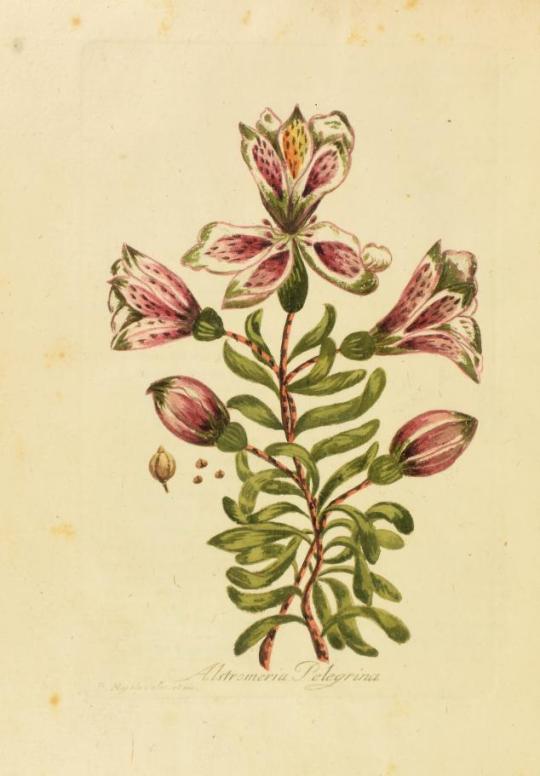

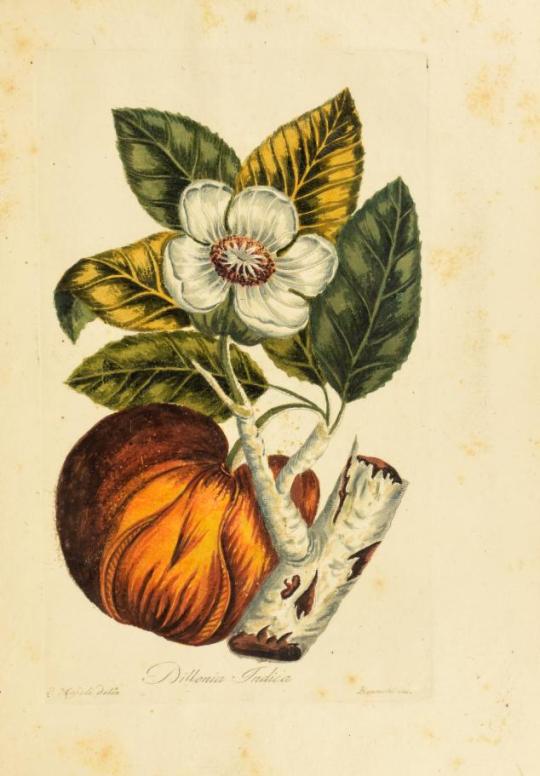

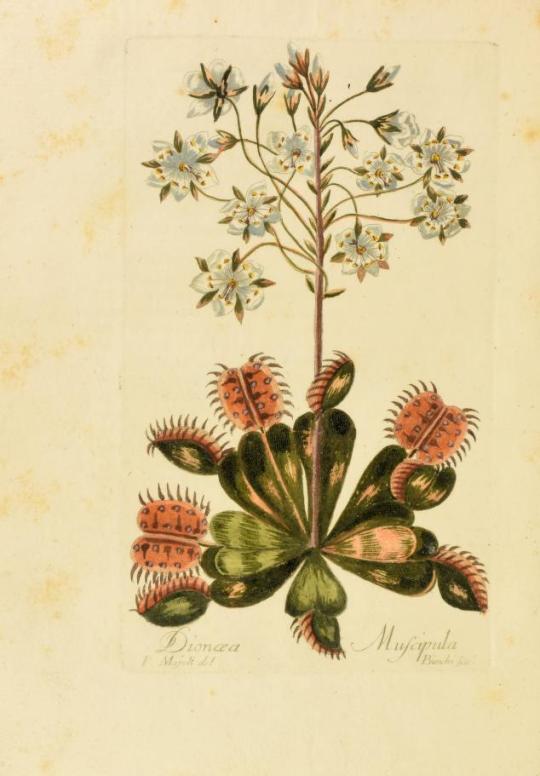
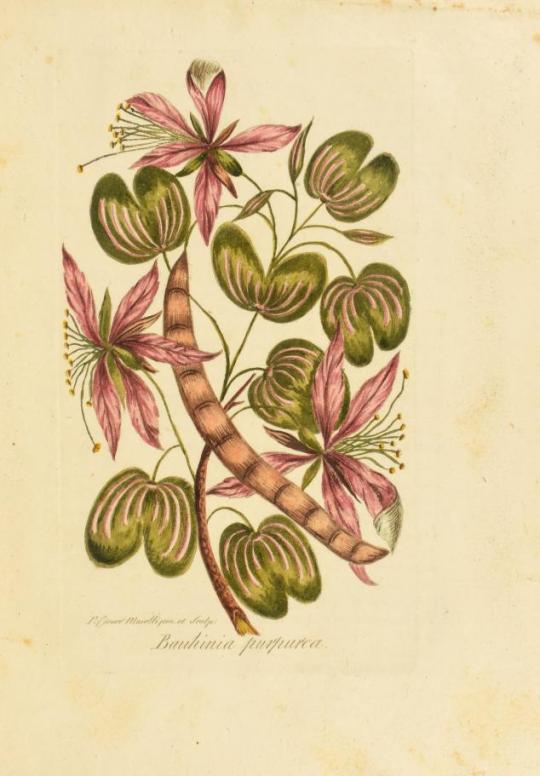


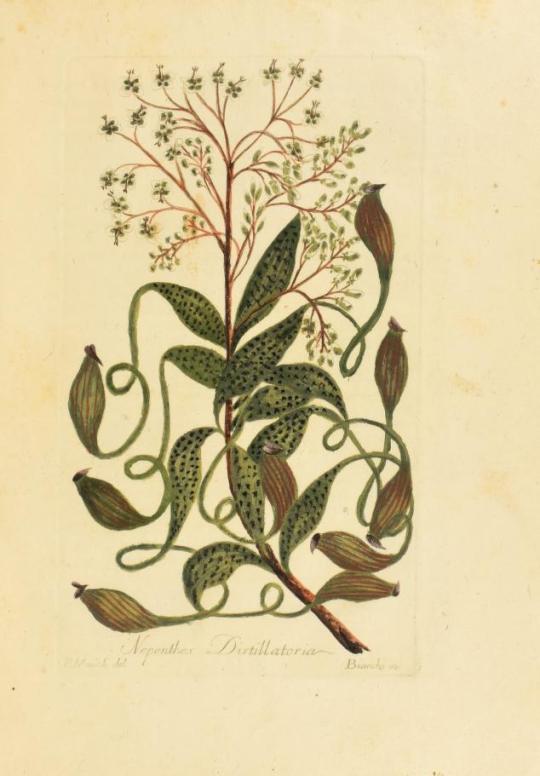

1) Upright Lima Lily
2) Cornucopian Shrub
3) Apple
4) Sensible Wood-sorrel
5) Venus Fly-trap
6) Crimson Mountain Ebony
7) The Lustre Vine
8) Yellow American Water-lily
9) Flagon Leaf
10) Orange Grape.
Illustrations taken from ‘Decade of Curious and Elegant Plants’ by John Hill.
Published 1786 by Nella Stamperia Salomoni.
Harvard University Botany Libraries.
archive.org
81 notes
·
View notes
Text
OCS as OBSCURE ASSOCIATIONS— pt. 11 🩷
TAGZ: @simply-jason ❤️🔥 @scarfacemarston ❤️🔥 @cetra ❤️🔥 @pitchmoss ❤️🔥 @bethesdas ❤️🔥 @newbordeaux ❤️🔥 @kyber-infinitygems ❤️🔥 @socially-awkward-skeleton ❤️🔥 @brujah ❤️🔥 @quickhacked ❤️🔥 @marazhaiaezyrraesh ❤️🔥 @timdownie ❤️🔥 and you!

ANIMALS: white stag. hawks. eagles. fireflies.
COLORS: pthalo green. ivory. sky blue.
MONTH: may.
SONGS: down in the willow garden— billie joe armstrong, norah jones | old river— orville peck | the stable song— gregory alan isakov.
NUMBER: four.
PLANTS: lilies. monstera. sorrel. ivy.
SMELLS: wood. cedar. wildfire smoke. sweat.
GEMSTONES: lava stone. black jade.
TIME OF DAY: absolute dead of night.
SEASON: wet spring.
PLACES: the pacific northwest. whitetail mountains. a clover field. this place. big sur. the edge of a lake. an unmarked grave. cliffside.
FOOD: venison. microwave pizza. microwave anything really. bar food.
DRINKS: an ice cold beer. lukewarm coffee.
ELEMENT: earth.
ASTROLOGICAL SIGNS: virgo. cancer. scorpio.
SEASONINGS: cayenne. pepper. oregano.
SKY: cloudy.
WEATHER: heavy rain.
MAGICAL POWER: flight.
WEAPON: crossbow.
SOCIAL MEDIA: instagram.
MAKEUP PRODUCT: lip gloss.
CANDY: peanut butter cups.
METHOD OF LONG DISTANCE TRAVEL: on foot, but stalking and lurking the whole way.
ART STYLE: impressionism.
FEAR: being alone, but not of her own volition.
MYTHOLOGICAL CREATURE: basilisk.
PIECE OF STATIONARY: a sticky note that you light on fire after reading.
THREE EMOJIS: 😶🏔️🍀
CELESTIAL BODY: earth.
#i actually have no idea who to tag cs i feel like i am being so annoying actually NDFJSNDJ#anyway#oc: elvira hawke#is that gonna stop me from doing all of these? no 🫶🏻
14 notes
·
View notes
Text
For me, wood sorrels are a group of plants I usually have to look down to find. This is certainly not the case for Oxalis gigantea. Native to the coastal mountains of northern Chile, this bizarre Oxalis has forgone the traditional herbaceous habit of its cousins in exchange for a woody shrub-like growth form.

When I first laid eyes on O. gigantea, I thought I was looking at some strange form of Ocotillo. In front of me was a shrubby plant consisting of multiple upright branches that were covered in a dense layer of shiny green leaves occasionally interrupted by yellow flowers. You would think that at this point in my life, aberrant taxa would not longer surprise me. Think again.
(continued)
#plants#oxalis#plantblr#biology#science#I used to have one of these! They're one of my favorite Oxalis species#I ended up selling it because the mealybugs kept getting to it though. I miss it#I'm hoping I can eradicate them someday so I can get another one
279 notes
·
View notes
Text
Warrior cat name Ideas
Prefixes - A-Z
A
Acorn
Adder
Amber
Ant
Apple
Arch
Arrow
Aspen
Ash
Asher
Alder
Amber
B
Badger
Bark
Beech
Bellow
Birch
Berry
Bird
Black
Blizzard
Brave
Breeze
Bright
Brown
Bell
Bug
Beetle
Bluebell
Blue
Bounce
Brindle
Brush
Bush
Buzzard
Buzz
Bee
Bumble
Bass
Basil
Bubble
Brine
Beaver
Bison (I feel like this only goes good with ‘horn’ or Bisonpelt/fur.)
Bat
Bone
Butterfly
Burdock
Broken
Bramble
Bracken
Bay
Brisk
Blossom
Briar
Boil
Branch
Bud
C
Cloud
Cloudy
Crystal
Cold
Cricket
Cliff
Cardinal
Crying
Cougar
Coyote
Cobweb
Chick
Cow
Cave
Cheetah
Carrot
Coral
Cactus
Claw
Cedar
Cherry
Cinder
Clover
Copper
Creek
Crooked
Crouch
Crow
D
Dew
Dewy
Duck
Dusty
Dust
Dune
Down
Dagger
Dodge
Dolphin
Daisy
Doe
Dapple
Dappled
Dark
Dawn
Dead
Dove
Drift
Dusk
E
Eagle
Ebony
Echo
Egg
Eel
Ember
F
Fallen
Fallow
Fawn
Feather
Fennel
Fern
Ferret
Finch
Fire
Flame
Fleet
Flint
Flower
Flow
Fly
Fox
Freckle
Frog
Frost
Furze
Fuzzy
Foal
Falling
Fall
G
Gale
Gust
Golden
Gold
Goose
Gorse
Gorge
Grass
Gray
Green
Grass
Goldfish
Guppy
Ghost
H
Hail
Half
Hare
Hawk
Hay
Hoot
Hazel
Heather
Heavy
Hollow
Holly
Honey
Honeycomb
Hummingbird
Horse
Happy
Hornet
Hound
Heron
I
Ice
Ivy
J
Jagged
Jay
Joy
Jaguar
Jackdaw
Jump
Juniper
K
Kestrel
Kink
Koi
L
Lake
Larch
Leaf
Lark
Leopard
Lichen
Lightning
Lily
Lion
Little
Lizard
Log
Long
Lost
Loud
Low
Lynx
M
Maggot
Mallow
Maple
Marsh
Meadow
Milk
Minnow
Mint
Mist
Misty
Mole
Moon
Morning
Moss
Mossy
Moth
Mottle
Mouse
Mouth
Mud
Mumble
Mink
Muddy
Moonlight
Mountain
Mushroom
Monkey
N
Nettle
Needle
Nut
Newt
Night
Nimble
O
Oak
Oat
Odd
Olive
One
Otter
Owl
Orange
Ocean
Orca
Opal
P
Pale
Perch
Pool
Pike
Peak
Prickle
Pounce
Pine
Petal
Petal
Pebble
Pear
Patch
Pirate(kittypet or loner)
Polar
Peach
Panda
Pond
Pigeon
Plum
Q
Quail
Quick
R
Rabbit
Rain
Ragged
Rat
Rattle
Root
Raspberry
Reed
Red
Robin
Rock
Rose
Rowan
Rubble
Running
Rushing
Rush
Russet
Rust
Rye
Raven
Raccoon
Rustle
Rattlesnake
Ravine
Rapid
S
Sage
Short
Sheep
Sedge
Shrew
Slate
Slow
Snail
Sneeze
Sorrel
Soot
Spider
Spruce
Sun
Sunny
Swallow
Shallow
Shade
Sharp
Scorch
Sand
Sandy
Sky
Silver
Smoke
Snake
Soft
Snow
Sparrow
Speckle
Splash
Spotted
Squirrel
Stalking
Stalk
Stalker
Starling
Stone
Storm
Stumpy
Stump
Sweet
Swift
Shred
Sloe
Shell
Seed
Shimmer
Shimmering
Skunk
Spirit
Squid
Shy
Sound
Summer
Sapphire
Spiraling
Spiral
Shark
Saturn
T
Tall
Talon
Tooth
Timber
Tiger
Twig
Tumble
Thorn
Thistle
Thrush
Tawny
Tangle
Ting
Trout
Torn
Toad
Tiny
V
Vine
Vixen
Void
Vole
W
Wasp
Weasel
Web
Weed
Wet
Whisker
White
Whale
Wild
Willow
Wind
Wolf
Winter
Wisteria
Whisper
Whispering
Water
Wave
Waver
Whisper
Watermelon
Whistle
Wood
Y
Yellow
Yew
Yarrow- suggested
You guys DONT WANNA KNOW how LONG this took. I’m crying. And I might’ve missed some so feel free to send me messages in chat to request me editing it and putting it in some (not like messaging but the. Chat in this post lol.)
@cryptidclaw I also did this for our Au to help us with renaming.
I will get to suffixes soon I promise.
123 notes
·
View notes
Text
Flowers of the March of Maedhros (possibly part one, there are so many!)
flora, fauna, geography and environment of Arda
I love doing general flora and fauna posts but I can’t fit everything in them so I’m trying to make more specific ones as well! please please feel free to send categories to work on with locations! Or any environmental world building asks!
extensive environmental world building for himring plus more in the Himring tag
Himring was the fortress of Maedhros in the March of Maedhros, a cold realm in Northeastern Beleriand located slightly Southeast of Dorthonion and south of Lothlann and Ard Galen. It was a cold region with taiga forested hills and icy waters, including the sources of several rivers, namely Celon and Little Gelion. The March was located between the cold mountains on the Southern and Eastern borders of Dorthonion and the mountainous regions of the Gap and Thargelion on its own Eastern border.
The cold likely comes from a combination of its proximity to the Ered Engrin and Ered Gorgoroth, especially given the boreal forested region of Dorthonion, as well as altitude in some parts of it. I go into this more on other posts.
The flora of the March is hardy, resistant to the cold that is present throughout so much of the year. Most flowers and herbaceous plants are herbaceous perennials that bloom in the spring and summer each year, sustained by their root stock despite the cold winters.
The March contains several habitats; boreal forests/taiga, montane steppes and meadows, riverbanks and marshier areas. Towards Maglor’s Gap, rocky outcrops including many of limestone invite plants that thrive on calcareous soils. Lothlann and Ard-galen were montane or boreal meadows. While boreal forest in many places is divided into three zones (closed forest where trees cover more than forty percent of the ground and have a dense layer of grass, high boreal or alpine and Southern boreal where croppings of temperate decidious trees might be found) I think the March and also Dorthonion which has some similarities in climate and ecology, would see a combination of these ecosystems.
Canon species: no canon species are associated with Himring, the March, or indeed much of Fëanorian occupied Eastern Beleriand
I use what we can extrapolate as possibly indigenous based on descriptions of climate, looking at similar real world locations, etc. I am also always happy to write posts based on real world locations by suggestion! (I’ve done the Havens of Sirion based on Southwestern Australia for example, etc. I think Tol Himling would have a similar climate to Hokkaidō).
-Mountain and red clovers bloom on the hills and meadow steppes in the late spring and summer. Arctic dandelion grows in the meadows in the North towards Lothlann and Ard Galen as does Annual Gypsophila, cutleaf coneflower, arctic harebell (also grows on stream banks), broadleaf chives, cow parsnip, longstalk starwort, heath violet
-Mountain avens grow in rocky outcrops throughout the hills around Himring, usually in the summer. Moss campion also grows throughout the hills, above the tree line. Nodding campion, heath grounsel, snow saxifrage, baneberry (also stream banks)
-Great spur violet, fireweed (especially in clearings), snowdrop, wall lettuce, wild tulip and grow in the forested areas. Boreal forests often contain berries and the forested areas around the hills has many species including bog bilberry, black crowberry, cloudberry, and wild strawberry.
-Alongside the rivers grows wood or alpine sorrel alongside glacier buttercup, Lapland buttercup, Arctic butterbur, one flower fleabane (which also grows in forested belts and meadows), alpine rockcress, moor king, wood ruff, alpine butterwort, and arctic or prickly rose.
-Arctic and common meadow rue grows in the North and West of the March in boggier areas as does milky whitlow grass, a flowering plant.
-Common Groundsel grows throughout the region
World building notes:
-A number of these species have medicinal uses
-Others are used as fodder, in salads, garnishes and other dishes or in teas
-storing and preserving plants of various kinds is highly utilized in the March, more so than other elven realms. Both flora with medicinal and culinary uses are frequently preserved through drying, fermentation or other methods
34 notes
·
View notes
Text
A writer’s guide to forests: What is a forest and the senses
Found throughout the world, a forest is an environment in which trees are the dominant plant species. Forest can also be referred to as woods or woodland. Smaller areas dominated by trees are called grove, copse, or glade. Tree species can be monospecific or mixed. Though forests are a worldwide phenomena, they have their limits; high mountains and the extreme poles are too cold and have too little sunlight for trees to grow. The lack of water, extreme temperatures, and erosion by windblown sand and rocks mean that few, if any, trees grow in the desert. And most plants are unable to tolerate the high salinity found near the oceans. Plant and animal life can vary greatly. Tropical rainforests are biodiversity hotspots, while the boreal forests can be eerily quiet. Do your research and see what kinds of flora and fauna you can expect to find in the specific type of forest you are writing about. The details matter. Speaking of which…
One problem that writers that come from the city may have is that their forests feel empty. Everything seems quiet all the time, there is little to no variation in the environment. It just doesn’t seem natural. It is important to use the senses in order to engage the reader, or at the very least let them know you’ve done your homework. Here are some examples of what you may want to ask yourself:
Sight: See the trees? What kind are they? Evergreen? Deciduous? Are they all about the same size, or is there a mix of saplings and mature trees? Are there any clearings or open spaces? Are there undulations in the terrain due to a river valley, a ridge of hills, or a chain of mountains? Is this the tropics, or the Arctic? What kinds of animals are hiding in the shadows? Is there a clear line of sight or does the thick undergrowth swallow all but a few shafts of light? Where are the game trails, and what could have left those prints? Where do the trees end?
Sound- Do you hear the babble of a small stream? What about a raging river or a waterfall? Do branches gently sway or do trees creak and moan? The splash just now, the breaking of a branch underfoot, are they faint or nearby? Are there animals walking peacefully, or are they running frantically? Can you hear what you cannot see? An owl hidden in a hollow, squirrels running through the branches, frogs and assorted insects chirping during the spring and summer? And in the autumn, can you hear the nuts and leaves fall?
Touch- How does the cracked and fissured bark of an old oak feel compared to the smooth bark of a young birch? Is the ground stony, or soil? Has it rained recently, and if so, what consistency is the mud? What about moss, lichen, mushrooms? Is the river scalding hot or icy cold? What does the fur of a mink feel like? Are the rocks covered in plants? Is the grain corse or fine? Does the air feel dry, or overbearing humid? And is that stump fresh and hard, or wet and crumbly due to age and decay?
Smell- Is that the scent of rain on the air? How do the flowers smell? Sweet, repulsive, or is there no scent to them at all? Is the moisture of moss different to that of rain? Can you smell the pine needles, or the swamp gases? Is that the sea salt on the air? And that smell…not the most pleasant. Can it be scat or a partially eaten carcass? And can that be the smell of fire?
Taste- Some say the air has a taste. Fire is ashy, winter is cold and fresh. Dense jungles are stale and mildewy. But what of plants and animal flesh? How bitter is an acorn? How sweet is a wild strawberry? Does wood sorrel remind you of lemon? Is the fish clean or muddy? How gamy is venison? What minerals are in the water? Does it taste pure, metallic, or ‘bad enough to be healthy’?
4 notes
·
View notes
Text
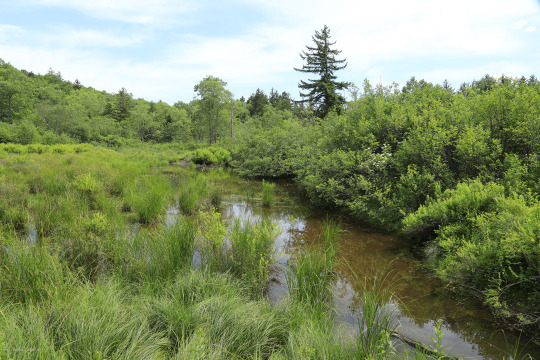

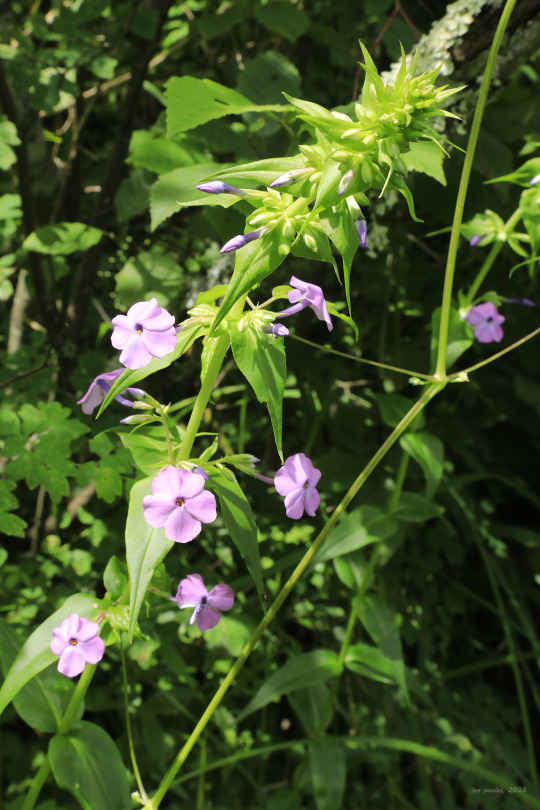

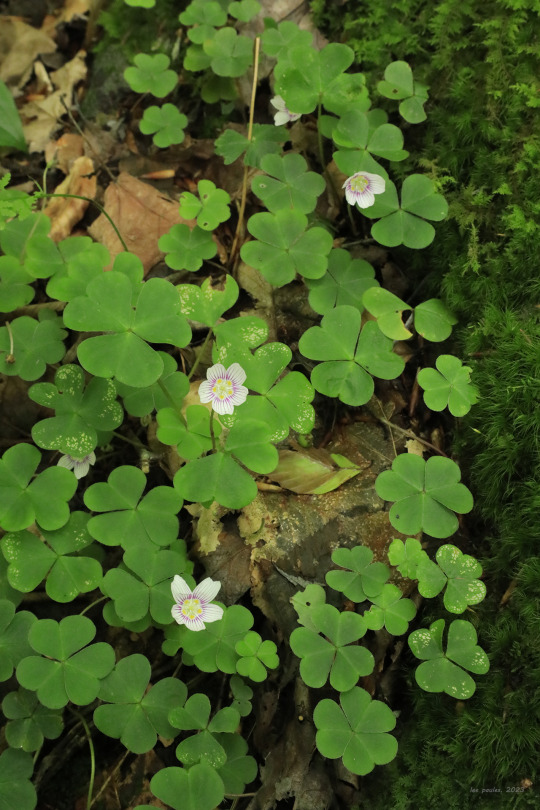

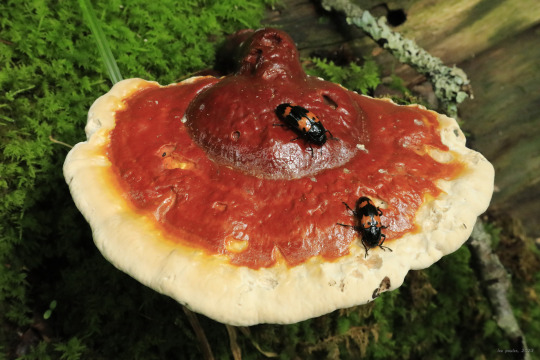


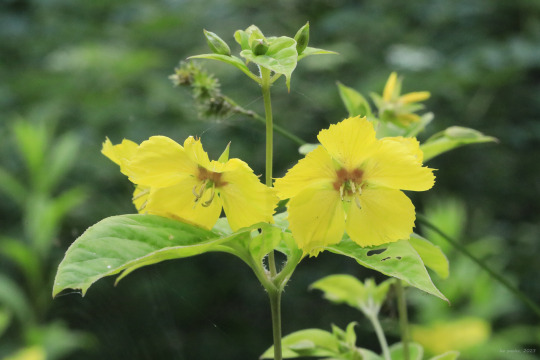
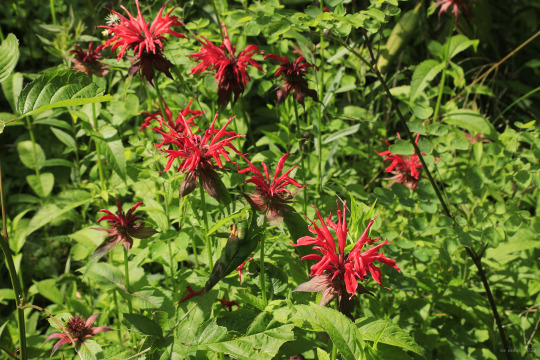
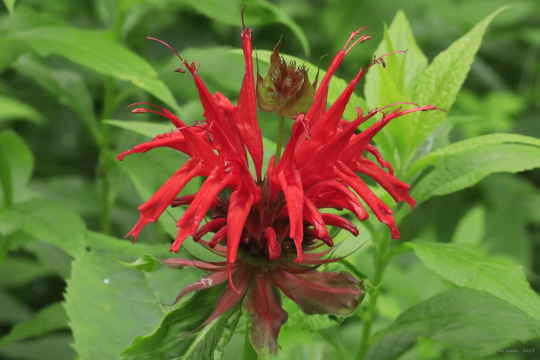
Part 2: Early Summer Wildflower Palooza, Cranberry Glades. During the first week of July, as the orchids are peaking in the bogs and seeps, the first wave of summer wildflowers, including the milkweeds and beebalms, arrives in earnest, bringing a blaze of color to open meadows and bog and forest margins. In the old growth woods of the adjacent Cranberry Wilderness, an array of strange and beautiful fungi sprout from moss-covered logs and the forest floor.
From top: tall meadow rue (Thalictrum pubescens), also known as king of the meadow, a wetlands-loving perennial whose distinctive, cream-colored flowers are composed of thread-like stamens only; meadow phlox (Phlox maculata), also known as wild sweet William and spotted phlox, easily distinguished from other phlox species by its red-spotted stems; mountain wood sorrel (Oxalis montana); a ramp (Allium tricoccum) flower, which emerges in early summer on a leafless stalk, after the foliage has died back; a shiny hemlock varnish shelf (Ganoderma tsugae) assailed by pleasing fungus beetles (Megalodacne), rarely seen because they hide under leaf litter during the day and feed on Ganoderma fungi at night; a lovely colony of crown-tipped corals (Artomyces pyxidatus); the beguiling fringed loosestrife (Lysimachia ciliata), an aggressively-colonizing perennial that makes for a shady ground cover in native wildflower gardens; and that blazingly-beautiful mint, scarlet beebalm (Monarda didyma), whose storied history as a medicinal herb stems from its antiseptic and stimulant properties.
#appalachia#vandalia#west virginia#wildflowers#allegheny mountains#flora#early summer#cranberry glades#monongahela national forest#fungi#insects#beetle#pleasing fungus beetle#tall meadow rue#king of the meadow#meadow phlox#wild sweet william#spotted phlox#mountain wood sorrel#ramp#wild leek#hemlock varnish shelf#crown-tipped coral#fringed loosestrife#scarlet beebalm#oswego tea
87 notes
·
View notes
Text

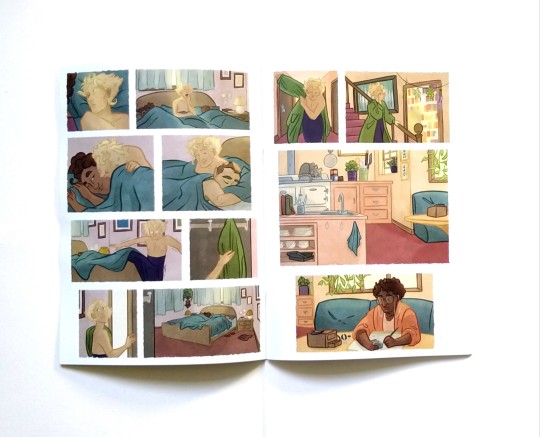
"In a wooded valley somewhere in the Olinari mountains - west of Mraich and south of the Oread Pass - there is a house on a hill where five witches live.
Aliya, Jade, Juniper, Sorrel and Wynn all specialise in a different magical art, from potioncraft to technomancy to enchantment, but this is a story about Juniper, and their work.
It’s delivery day.
Fly with Juniper in this fantasy slice of life story about magic, connections, home, and family."
Check out my new comic, Deliveries, on my patreon, posting every Friday at 6pm at patreon.com/izziillustrates ✨
20 notes
·
View notes
Note
Sometimes I'm a Mountain slut. Sometimes I am more of a Mountain enthusiastic. And sometimes, when I'm plucking wood sorrel from the base of his antlers and eating it as a snack, I am a Mountain connoisseur.
a mountain whore when i think about his sex between my thighs. sometimes a keen mountain appreciator, a mountain expert, if you will. when im gazing into that deep black ichor of an earth ghoul unglamoured, petting the moss spread across his fevered shoulders and holding his great, heavy heart in my arms, i am a mountain savant.
#damn#good poetry collab anon#mountain my love#ask#anon#the band ghost#mountain march#mountain ghoul
10 notes
·
View notes
Text

The burrow belonged to the Weasley family for many centuries, built by Francis Weasley and his wife Margery Weasley in 1610; who built the house out of roots, stones, trees and the earth, with the help of the wands they crafted out of fallen trees and gemstones. The Weasleys were amongst the oldest of the wizarding families, who had managed to escape multiple witch hunts, thus had nothing among them when they settled in the rural area of Britain, near a muggle town where the houses could be counted with the fingers of their hands. They had settled down in the middle of a clearing, after months of traveling, Margery herself was nearing the birth of her child, thus, could no longer move. Francis, knowing he needed to protect his family, called for the guidance of the Goddess Hecate, who made the clouds split apart to let the moon shine down on a fallen Rowan tree, and amongst splinters and broken twigs, there was one living twig, with a white flower growing on it. Francie took the twig and yanked it off the tree, watching in amazement as the twig began bending and morphing, becoming softer and pointy, the flowers began shifting as they wrapped around the twig like vines, before the remaining wood traveled south of the wand, creating a hilt for Francis to hold comfortably. With his new wand, Francis raised the eart and created a base, he used the fallen tree to build stairs and railing, the stones that had fallen down the mountain became walls and a roof, lastly,he swished his wand around amd willed the wood to become a door. He went down to the village the morning after, and began taking the furniture that was broken and damaged, left to rot outside. He used his magic to fix the furniture and began building his house. He built a turret out of stone and stairs out of vines, his windows were made with the frozen water of the lake nearby, his home grew and grew until their son was born, a son who he named Edward. The home grew in size everytime a new member joined the family, each generation adding more and more traits to make it feel more like a home. Given that it was made if stone, it didn't take long for ivy and honeysuckle to grow on the sides; the material also allowed for the house to retain heat. The Weasley house grounds grew with the house.
In 1708, Circe Weasley planted her garden with flowers brought to her by different lovers, who desperately tried to court her, by 1712, the garden was filled with beautiful flowers that made the garden swarm with butteflies and bees.
In 1756, Florent Weasley planted multiple fruits and vegetables to harvesy and sell, the grounds where they lived was so fertile that they had multiple bushes of blueberries, strawberries, and so many more fruits.
In 1806, Aciano Weasley and his brother Sorrel Weasley created an area of the house where they would offer tarot readings and different potions to clients, normally people of novility. Aciano would read their future, telling them how long they would reign, how would they die and who would follow their reign, many wars were seen by him before they even happened. Sorrel would give them potions for different occasions, if they struggled to conceive or feared getting old and dying, they created a book of potions, and their business flourished.
In 1827, Sorrel's son, Rowan, created a large greenhouse where he experimented with different plants and created multiple salves and potions never discovered before. He began traveling all over the world, writing down every plant he saw, every potion he made and what it did. By the time the boy turned into a man, he had written four books with the plants in Britain, Portugal and Spain. By the time he was sixty years of age, he had traveled to every country known to men and wrote a book for each country. His books became famous and sold millions of copies, mostly used by schools but also used by different herbologists and potion makers who wished to expand on their arts.
In 1891, the last addition was made, a large conversatory was made by Matilda Weasley. The house had grown and become large, and yet the stone still was able to conduct the heat of the firplaces throughout the house. The conversatory was as tall as the four story house, so large that it fit multiple plants, a fountain that lead to a pond and an area where the family would sit and spend their times talking. The greenhouse made by her great-uncle instead became a specific place where the Weasleys would craft potions and practice their magic.
Despite the following generations fighting in a war, the Burrow was still glorious and magical, with garlands of oranges and rosemary twigs scenting the house and filling it with a calming and soothing aroma. The house had been witness to so many people being born and dying, her ears had heard every whisper ever made, every thought ever had. The house was alive, with the climbing flowers seeping through cracks and into the house, sealing every crack and blooming inside. The Burrow looked almost alive, and even to a stranger who just spent five seconds near the house, it felt like a home. The family still possessed many of the books written by their great great great great great uncle Rowan, and made money from them; not only that, but they would also often create potions and sell them to different people who knew of the secret of wizards, different witches who would drink potions to remain young looking but didn't want to spend fortunes on treatments made by medieitches. And while not rich, the family was able to survive from their harvests and their business.
6 notes
·
View notes
Text
The west coast of Ireland is famed for its wave-beaten shores and bare, stony mountains, where only a few stunted trees grow in hollows and valleys, bent by harsh storms blowing in from the North Atlantic.
The coastline, with its cold, clean winds and ever-changing skies, gives an impression of unspoiled, primal nature. In 2014, the Irish government designated a 1,550-mile tourist route along the coast, and called it “The Wild Atlantic Way.”
Yet, where generations of painters, poets and visitors have rhapsodized about the sublimity of nature and the scenic Irish countryside, ecologists see a man-made desert of grass, heather and ferns, cleared of most native species by close-grazing sheep that often pull grasses out by the roots.
As climate change threatens even more ecological disruption, a growing Irish “rewilding” movement is calling for the restoration of the native forests that once covered these lands, both as natural machines to capture atmospheric carbon, and to preserve and extend what remains of Ireland’s dwindling biodiversity.
Rewilding, the practice of bringing ravaged landscapes back to their original states, is well established in Britain, where numerous projects are underway. For Ireland, this would mean the re-creation of temperate forests of oak, birch, hazel and yew that once covered 80 percent of the land but now — after centuries of timber extraction, overgrazing and intensive farming — have been reduced to only 1 percent.
For some, rewilding began with a personal choice.
In 2009, Eoghan Daltún, a sculpture restorer, sold his house in Dublin to buy 33 acres of gnarled oaks and rugged hillside on the Beara Peninsula in County Cork, in the far southwest. Where local farmers had once raised a few cattle and sheep, he erected a fence to keep out feral goats and sika deer, two nonnative, invasive species that nibble undergrowth and saplings down to the roots, and kill older trees by gnawing away their bark.
One day in late spring, with the wind driving rain off the foaming ocean, he proudly showed off the results. Wood sorrel, dog violet and celandine were already in flower beneath the twisted branches of mature oak and birch, thickly draped in mosses, ferns and epiphytic plants. New shoots of oak, hawthorn and ash pushed up through the grass and dead ferns.
“The sheep and deer would eat those little saplings before they even started on the grass, so when the old trees eventually died, there’d be no new ones to replace them,” said Mr. Daltún, who wrote about his experiment in “An Irish Atlantic Rainforest,” a memoir. “But the native forest is returning here, all by itself. I don’t have to plant anything.”
Ireland has committed to increasing the total proportion of forested areas to 18 percent by 2050, from 11 percent currently. Yet this would still be well below the European Union average of 38 percent, and most of it would consist of commercial spruce and pine plantations that make up more than 90 percent of Ireland’s current woodlands.
Grown to be harvested within 30 to 40 years, these nonnative conifers are treated with chemicals that pollute groundwater and rivers. Ecologists say little can grow on a forest floor carpeted with dead needles and a desert for insects and native wildlife. And much of the carbon they store is released again when they are harvested.
It would be better for biodiversity and carbon sequestration to pay farmers and landowners to grow native trees and leave them unharvested, according to Padraic Fogarty, the campaign officer for the Irish Wildlife Trust. He cited the example of Costa Rica, which has reversed the Central American trend of deforestation by paying farmers to preserve and extend the rainforest.
Ray Ó Foghlú of Hometree, another rewilding organization, believes farmers could be paid not to plow or graze strips land that border remaining pockets of native woodland — often only a few trees and bushes — that cling to inaccessible hillsides or in the awkward corners of fields. Biologically rich, these microforests would, if left to themselves, quickly recolonize neighboring areas, Mr. Ó Foghlú believes. He himself recently bought nine acres of “scrubland” — home to sessile oaks (Ireland’s national tree), hazels, wood sorrel, blue bells and anemones.
“I pinch myself still that I own it,” he said. “It has a river running through it, and I can’t believe it’s mine, for the price of a second hand car these days.”
Irish rewilding enthusiasts look enviously at the highlands of Scotland, ecologically very similar to the west of Ireland, but where the concentration of ownership in the hands of a few hundred aristocrats and magnates allows rewilding at much greater scale.
Ecologically minded figures like the Danish billionaire Anders Holch Povlsen, Scotland’s largest private landowner, with 220,000 acres, can clear deer and livestock from tens of thousands of acres, allowing native growth to quickly regenerate. Eradicated native species, notably the European beaver, have also been reintroduced to Scotland to restore ecological balance.
In Ireland, where the average farm size is 83 acres, such large-scale rewilding would seem to be unfeasible. The big exception, so far, has been in the unlikely setting of County Meath, in the flat, highly fertile and intensively farmed east of the island, and in the unlikely person of Randal Plunkett, a New York-born filmmaker, vegan and death metal enthusiast.
Since Mr. Plunkett — better known, to some, as the 21st Baron of Dunsany — inherited his 1,700 acre ancestral estate in 2011, he has cleared it of livestock and left one-third to revert to unmanaged forest, complete with a wild herd of native red deer.
“Biodiversity is expanding dramatically,” said Mr. Plunkett, 30, standing in thick woodlands humming with bees and other busy insects. “At least one species has returned every year since we started. Pine martens. Red kites. Corncrakes. Peregrine falcons. Kestrels. Stoats. Woodpeckers. Otter. We think there’s salmon in the river again, for the first time in my life.”
One of his forebears, Sir Horace Plunkett, pioneered modern, industrial farming in Ireland early last century, encouraging small farmers to set up cooperatives and to mechanize their operations and use fertilizers and chemicals. Today, Randal Plunkett says, not everyone in this rich farming area is happy about his decision to abandon intensive agriculture, or to ban all hunting on the estate.
“It’s safe to say I’m not popular with the hunting crowd,” he said. “I’ve had death threats.”
Rewilding has its opponents. Ireland’s influential agribusiness lobbies are economically and culturally suspicious of suggestions that farmland should be allowed to revert to what they traditionally derided as “scrub.” People will always need food, they point out. In more marginal areas in the uplands and west, farmers argue recent regulations have reduced the numbers of sheep they can graze per acre, and that removing them altogether would harm existing biodiversity.
“If you leave an area ungrazed and unmanaged, you leave an area that’s at risk of being burned,” said Vincent Doddy, the president of the Irish Natura and Hill Farmers Association. “I think cattle and sheep are the most cost effective way of managing the land.”
Even on poor soil and small farms, where livestock production is sustainable only through government grants and second jobs, the title of farmer is still prized beyond its cash value.
“You’d have some of them who’d say, ‘Sheep are a part of my family tradition, and my identity, and it’s what I want to do,’” said Mr. Daltún, who himself keeps some cattle on his 33 acres. “But others would see the benefit of being paid for looking after the land, and letting it regenerate, and to have time to focus more on their other work or business.”
6 notes
·
View notes
